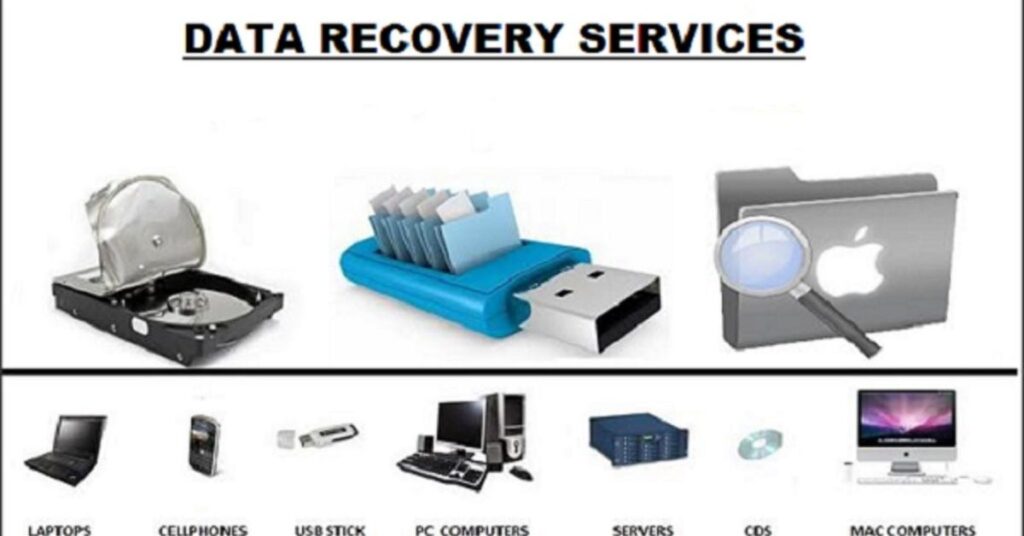In contemporary information-pushed global, the loss of vital files or information may be devastating for individuals and companies alike. Whether it’s due to human mistakes, hardware failure, or a cyber attack, the incapability to recover important records can result in high-priced downtime, productivity losses, and even legal or monetary effects. What Is Granular Recovery Technology?

That’s why having a reliable backup and recovery solution is crucial. input granular recovery era (GRT) is a game-changer in the subject of statistics protection that gives a more efficient and target method to convalesce your valuable facts.
What Is Granular Recovery Technology?
Granular restoration technology (GRT) is a data backup and recovery approach that permits customers to repair unique documents, folders, or utility statistics. while not having to get better the whole backup set. Unlike traditional full system restores, which can be time-consuming and resource-intensive, GRT empowers users to selectively restore only the necessary data, saving valuable time and storage space.
This technology is particularly beneficial for organizations that rely on mission-critical applications and databases, such as Microsoft Exchange, SharePoint, SQL Server, and VMware virtual machines. By supporting granular recovery, these applications enable users to quickly recover individual emails, documents, or database records, minimizing downtime and disruption to business operations. What Is Granular Recovery Technology?
Applications That Support Granular Recovery Technology (GRT)
Several popular applications and platforms have embraced granular recovery technology, recognizing its benefits for data protection and business continuity. Here are some examples:
- Microsoft Exchange: With GRT, administrators can recover individual emails, calendar entries, contacts, or even entire mailboxes without restoring the entire Exchange database.
- SharePoint: Granular recovery in SharePoint allows for restoring specific documents, lists, libraries, or sites, eliminating the need for a full content database recovery.
- SQL Server: By leveraging GRT, database administrators can recover individual tables, rows, or even specific data elements from SQL Server backups, ensuring minimal data loss and faster recovery times.
- VMware virtual machines: GRT support in VMware environments enables administrators to recover individual virtual machine disks (VMDKs) or specific files and folders within a virtual machine, without restoring the entire VM.
How Does Granular Recovery Technology Work?
Granular recovery technology works by creating application-aware backups that capture individual components or data objects within an application or system. These backups are typically store in a specialize format for granular access and recovery.
During the backup process, GRT-enabled solutions analyze the application data and create an index or catalog of the individual components. Such as emails, documents, or database records. This index enables users to browse and select specific items for recovery, rather than restoring the entire backup set.
When a recovery is require, users can access the backup catalog, locate the desired files or data objects. And initiate a granular restore. The backup solution then retrieves only the selected items from the backup set and restores them to the desired location. Significantly reducing recovery time and storage requirements.
Traditional Recovery vs. Granular Recovery: What’s the Difference?
To appreciate the advantages of granular recovery technology, it’s important to understand how it differs from traditional backup and recovery methods:
Traditional Recovery:
- Requires restoring the entire backup set, even if only a few files or data objects need to be recover.
- It can be time-consuming and resource-intensive, especially for large backup sets
- This may result in unnecessary data loss or overwrites, as the entire system or application is restore to a previous state
Granular Recovery:
- Allows for selective restoration of specific files, folders, or data objects
- Faster recovery times, as only the require data is restore
- Reduced storage requirements, as only the necessary backup components are access
- Extra flexibility and control over the recuperation system
- Minimizes data loss and unnecessary overwrites
Here’s an example to illustrate the difference: Imagine you accidentally deleted an important email from your Microsoft Exchange mailbox. With traditional recovery, you would need to restore. The entire Exchange database backup, potentially overwriting newer emails or data in the process. However, with GRT, you can simply browse the backup catalog, locate the specific email, and restore it directly to your mailbox. Without affecting any other data.
How to Choose Between Traditional Recovery and Granular Recovery
When it comes to choosing between traditional recovery and granular recovery methods, there are several factors to consider:
- Data Volume: If you’re handling big volumes of statistics or complex applications, granular recuperation may be greater efficient and fee-effective. As it minimizes the quantity of records that desire to be restore.
- Recovery Point Objectives (RPOs) and Recovery Time Objectives (RTOs): If your organization has stringent RPOs and RTOs, you need to recover data quickly and with minimal data loss. Granular recovery may be the better option.
- Criticality of Individual Data Components: If certain record additives, which include precise emails or database records, are essential to your operations. granular healing can make certain that you can restore those additives without disrupting the entire system.
- Compliance and Regulatory Requirements: Depending on your industry and regulatory environment, you’ll be require to keep granular backups and features. The capacity to repair specific information elements for auditing or compliance functions.
It’s important to carefully assess your organization’s specific needs and consult with data protection experts to determine the most appropriate backup and recovery strategy.
Do Image-Level and File-Level Backups Separately
While granular recovery technology offers numerous advantages, it’s crucial to recognize that. It should not replace traditional full-system backups or image-level backups. Instead, a comprehensive data protection strategy should involve both image-level backups and granular, file-level backups performed separately.
Image-level backups capture the entire system or application state, including configuration settings, system files, and application data. These backups are essential for disaster recovery scenarios. Such as hardware failure or system corruption, where a complete system restore is required.
File-level backups, then again, consciousness on character documents, folders, or information items within a utility or machine. These backups leverage granular restoration technology to enable selective recuperation of unique record additives.
By maintaining both image-level and file-level backups, organizations can ensure they have the flexibility to handle a wide range of recovery scenarios, from complete system restores to granular data recoveries. While minimizing data loss and downtime.
Summary
The granular recovery era (GRT) is a recreation-changer in global statistics protection, imparting a greater green. And focused approach to getting better important records. By permitting customers to restore unique documents, folders, or software information selectively, GRT minimizes recuperation instances, reduces garage necessities and provides extra flexibility and management over the healing procedure.
With support from popular applications like Microsoft Exchange, SharePoint, SQL Server, and VMware, GRT has become an essential tool for organizations seeking to safeguard their valuable data and ensure business continuity.
While granular recovery technology offers numerous advantages, it’s important to remember that it should be used in conjunction. With traditional full-system backups or image-level. Backups to provide a comprehensive data protection strategy.
By knowing the differences between traditional healing and granular restoration. And punctiliously considering factors consisting of data volume, restoration targets, and criticality of man or woman data additives, companies could make informed decisions about the first-class backup and restoration method for their specific wishes.
“Data is the lifeblood of modern businesses, and granular recovery technology is a lifeline for protecting that invaluable asset.” – [Quote from a data protection expert]
In conclusion, granular healing technology is a powerful solution that empowers users to correctly get better their critical facts, minimizing downtime and ensuring commercial enterprise continuity. As facts continue to develop in significance, embracing GRT as a part of a comprehensive data safety strategy will become increasingly vital for companies of all sizes and industries.
FAQs
A: Granular Recovery Technology (GRT) is a data recovery method that allows the recovery of individual files. And folders from a digital storage device rather than recovering entire partitions or drives at once. Using GRT, recovery specialists can preview and selectively recover specific data blocks to restore only the needed files.
A: GRT works by rebuilding the file allocation table (FAT) of a storage device at a granular level rather than a partition level. Specialized scanning tools are used to analyze the raw sectors of the drive and reconstruct file metadata like names, dates, and sizes. This allows individual files and folders to be recovered selectively based on their metadata. Rather than the whole partition.
A: The main benefits are being able to recover only needed files to save time and storage space. With traditional methods, recovering entire partitions risks overwriting usable data. GRT also enables data previewing so users can verify desired files before recovery. It’s useful for situations like forensic data acquisition where selective file retrieval is important.
A: GRT is well-suited for file-level recovery from various types of data loss scenarios like accidental deletion, formatting, and partition/volume loss due to file system corruption. It can recover items from recycled sectors on a near-full drive better than traditional methods. GRT is also effective in cases of physical damage, firmware corruption, or failures affecting only portions of the drive.
A: GRT is commonly used by data recovery professionals and computer forensics experts to selectively retrieve files from damaged or inaccessible storage media. Law enforcement agencies also leverage their targeted file recovery capabilities for digital forensic investigations. Commercial data recovery tools from major software vendors have implemented GRT for improved precision over vintage drive recovery techniques.






![When was AI art invented? [1960-2024]](https://magazinescoverup.com/wp-content/uploads/2024/05/When-was-AI-art-invented-1960-2024-150x150.jpg)